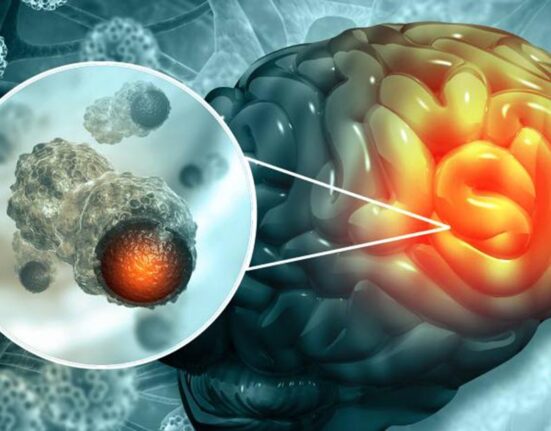A Head and Neck cancer is a cancer that occurs in the mouth, throat, voice box, nose, sinuses, or salivary glands. Increase your head and neck cancer awareness with this article, as we will delve into what it is, its types, stages, symptoms, causes and risk factors, as well as available treatments.
What Is Head And Neck Cancer?
Head and neck cancer refers to a group of cancers that originate in the tissues and organs of the head and neck region. This area includes the mouth (oral cavity), throat (pharynx), voice box (larynx), nasal cavity, paranasal sinuses, and salivary glands. These cancers can also affect the thyroid and parathyroid glands.
The majority of head and neck cancers are squamous cell carcinomas, which develop from the squamous cells lining the moist, mucosal surfaces inside the head and neck.
What Are The Types Of Head And Neck Cancer?
There are several types of head and neck cancer. They are classified or named based on the location of cancerous cells within the head and neck region.
- Mouth (oral cavity) – Affects the lips and the inside of the mouth such as gums, cheeks, the front two-thirds of the tongue, and the roof of the mouth. It often starts as a small white or red patch that does not heal.
- Throat (Pharynx) – Affects any of the three areas that make up the pharynx. These are nasopharynx (upper part of the throat), oropharynx (middle part of the throat which includes the base of the tongue, tonsils, and back of the throat), hypopharynx (lower part of the throat).
- Voice box (Larynx) – Affects the voice box that contains the vocal cords responsible for producing sound.
- Nasal Cavity and Paranasal Sinuses – Affects the nasal cavity which is the area inside the nose and the paranasal sinuses which are the air-filled spaces in the bones around the nose.
- Salivary Glands – Affects the salivary glands which produce saliva that helps with digestion.
What Are The Symptoms?
The head and neck cancer symptoms depend on the location of the cancer. Some of these symptoms may also indicate a different condition. In some cases, individuals with head and neck cancer may also not experience any head and neck cancer symptoms.
These are the most common head and neck cancer symptoms based on its location:
- Mouth (oral cavity) – Red or white patches in the gums and tongue. Other symptoms include swelling in the jaw and bleeding in the mouth area.
- Throat (Pharynx) – Difficulty in breathing or talking and painful swallowing suggests symptoms in the throat. Ear pain or ringing in the ears is also one of symptoms under the pharynx area.
- Voice box (Larynx) – Hoarseness or changes in the voice such as a raspy or weak voice is a symptom in the voice box. Painful swallowing, as well as ear pain are also symptoms occurring in the larynx.
- Nasal Cavity and Paranasal Sinuses – Blocked nose, chronic sinus infections, nosebleeds, headaches, pain in the upper teeth and swelling around the eyes.
- Salivary Glands – Swelling under the chin or around the jawbone may indicate a cancer in the salivary glands. Other symptoms are paralyzed face muscles, and ongoing pain in the face or neck.
What Are The Risk Factors?
Several factors can increase the risk of developing head and neck cancer. The most common risk factors associated with this type of cancer are:
- Smoking – Tobacco use including smoking of cigarettes, cigars, or pipes and chewing tobacco. Second hand smoke may also increase the risk of developing head and neck cancer.
- Drinking Alcohol – Heavy and frequent alcohol consumption higher the risk of developing cancer in the mouth, throat, and voice box.
- Human papillomavirus (HPV) infection – certain strains of HPV commonly transmitted through sexual contact is a risk factor for head and neck cancer.
- Poor oral hygiene – Infrequent brushing and flossing can lead to gum disease and tooth decay that may increase the risk of oral cavity or cancer in the mouth.
- Prolonged sun exposure – Linked to cancer in the lip area.
- Occupational Exposure – Exposure and inhaling of certain chemicals such as asbestos, nickel, wood dust, and paint fumes.
- Radiation Exposure – Repeated exposure in radiation is a risk factor that is associated with salivary gland cancer.
Other factors include family history of this cancer, poor nutrition, weakened immune system, and previous history of head and neck cancer. It is also believed that head and neck cancer is more common in men than women.
What Are The Stages Of Head And Neck Cancer?
The TNM cancer staging system was developed and maintained by the American Joint Committee on Cancer (AJCC) and the International Union Against Cancer (UICC). It is used to describe the extent of head and neck cancer and evaluates the three factors when it comes to treating cancer: The size and extent of the tumour (T), if it has spread to nearby lymph nodes (N), and if the cancer metastasized or spread to the other parts of the body (M).
- Stage 0 – Cancer cells are only present in the surface layer of the tissue and have not reached deeper tissues.
- Stage I – The primary tumour is less than 2cm.
- Stage II – The tumour is between 2 to 4 cm.
- Stage III – The tumour is larger than 4cm or is smaller than 3cm but is present in a lymph node.
- Stage IV – The most advanced stage of head and neck cancer. The tumour may be any size but has spread to:
a. Nearby tissue or other areas in the head and neck region.
b. One large lymph node that is more than 3cm in size on the same side of the tumour, multiple lymph nodes of any size on the same side as the tumour, or one lymph node on the opposite side of the tumour.
c. Parts of the body beyond the head and neck region.
What Are The Available Treatments?
Cancers of the head and neck may be cured especially if detected early. Treatments depend on various factors such as the location of the cancer, its stage, possible side effects, as well as the overall health of the patient.
Some of the treatment options for head and neck cancer are:
- Surgery – It is performed to remove the cancerous tumour. Depending on the location and how far the cancer has spread, different surgical techniques may be used by the surgeon such as invasive surgery, laser surgery, or reconstructive surgery.
- Radiation Therapy – This involves using high-energy x-rays or other particles to kill cancer cells and shrink tumours. It can be used on its own or in combination with other treatments such as surgery and chemotherapy.
- Proton Beam Therapy – Proton therapy is a type of radiation therapy that uses protons (positively charged particles) instead of traditional X-rays. Protons can be more precisely targeted to the tumour, potentially reducing damage to surrounding healthy tissues.
- Chemotherapy – It is the use of drugs to kill cancer cells, by keeping them from growing. It is often used in combination with radiation therapy.
- Targeted Therapy – This treatment also uses drugs. It specifically targets certain molecules or pathways involved in the growth of cancer.
- Immunotherapy – Immunotherapy drugs help stimulate the immune system to attack the cancer cells.
Proton Therapy For Head And Neck Cancer In Singapore
Health365 has partnerships with trusted medical providers that offer treatment for head and neck cancer in Singapore. One of our partners, Singapore Institute Of Advanced Medicine Holdings, offers radiation therapy in Singapore such as proton beam therapy. Contact us through the button below to schedule a consultation.
Protect against cancer, cardiovascular disease, and other chronic diseases with regular health screening. Compare and shop for health screenings from Singapore and regional healthcare providers at a single convenient platform - shop.health365.sg
This article is informative only and is not intended to be a substitute for professional medical advice, diagnosis, or treatment, and should never be relied upon for specific medical advice.
























































